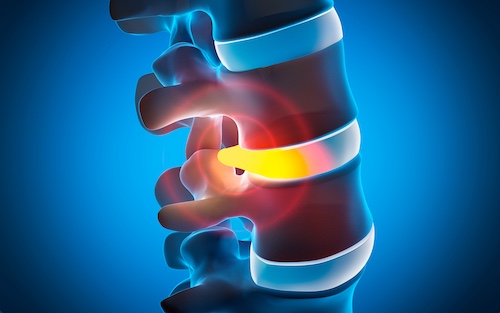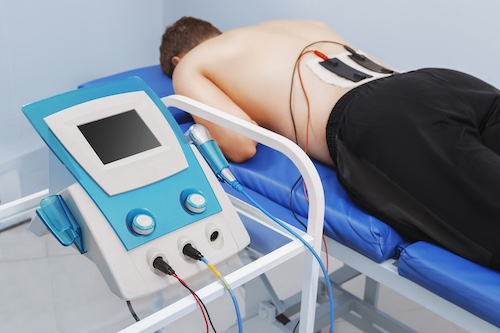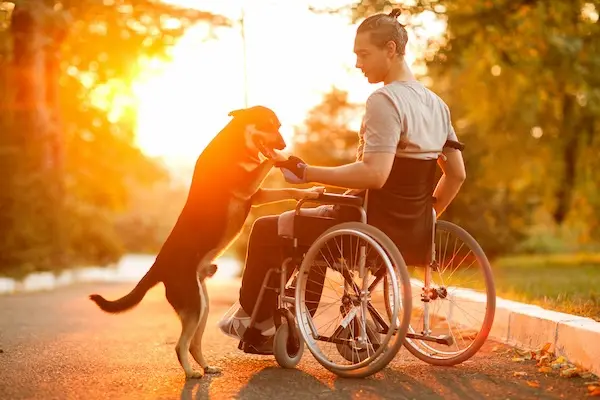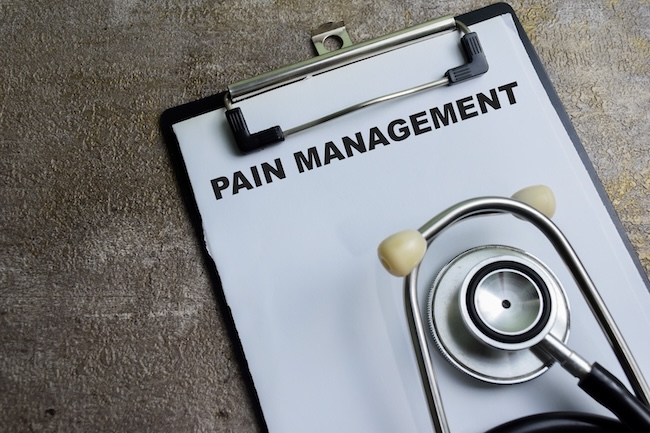Degenerative Disc Disease Conservative Treatment: Understanding Your Options
At VeriSpine Joint Centers, we deliver focused care for chronic joint and spine pain, personal injury recovery, and workers’ compensation cases. Our team of experienced specialists evaluates each patient with clear diagnostics, then develops a direct treatment plan. We offer physical therapy, interventional procedures, and coordinate surgical referrals when needed. From our Lawrenceville-area location, we aim to restore daily function, reduce pain, and support long-term spine and joint wellness.
Degenerative disc disease conservative treatment helps patients manage chronic back or neck pain without surgery. At VeriSpine Joint Centers in Lawrenceville, Georgia, our focus is on restoring movement, reducing pain, and preventing further disc degeneration through effective nonsurgical care.
This guide explains how degenerative disc disease develops, the value of conservative treatment, and when interventional or surgical care may be needed to protect spinal health and improve daily life.
Understanding Degenerative Disc Disease
Degenerative disc disease is a common spinal condition that affects the intervertebral discs and surrounding structures. It often develops as part of the natural aging process, leading to chronic low back pain or neck pain in many patients.
What Happens in Degenerative Disc Disease
The intervertebral discs act as cushions between the vertebrae. Over time, these discs lose water content, becoming thinner and less flexible. This disc degeneration can reduce the disc’s ability to absorb shock, increasing pressure on nearby nerve roots and facet joints.
Causes and Risk Factors
The primary cause of degenerative disc disease is age-related wear and tear. Repetitive stress, excess body weight, poor posture, and smoking can accelerate disc damage. These factors may lead to lumbar degenerative disc disease or cervical disc problems, both of which can cause pain and stiffness.
Common Symptoms
Patients often report chronic low back pain or neck pain that worsens with sitting, bending, or twisting. Pain may radiate down the arms or legs if a nerve root becomes irritated. Some experience numbness, tingling, or muscle weakness due to spinal cord or nerve compression.
How It Affects the Spine
As discs weaken, surrounding vertebrae may shift, creating mechanical back pain. Bone spurs can form, narrowing the spinal canal and reducing spinal cord function. These changes may lead to spinal stenosis or nerve compression, resulting in leg pain or neurological symptoms.
Diagnosis at VeriSpine Joint Centers
At VeriSpine Joint Centers in Lawrenceville, Georgia, specialists evaluate patients presenting with disc disease using physical exams and imaging studies. This helps identify the severity of disc degeneration and determine the best treatment plan. Accurate diagnosis is the foundation for effective degenerative disc disease conservative treatment.
Conservative Treatment for Degenerative Disc Disease
Degenerative disc disease conservative treatment focuses on relieving pain, improving movement, and preventing further disc degeneration without surgery. VeriSpine Joint Centers in Lawrenceville provides nonsurgical treatment options that help patients return to daily activities safely.
Physical Therapy and Exercise
Physical therapy strengthens the muscles that support the lumbar and cervical spine. A physical therapist guides patients through controlled movements that reduce pressure on spinal discs and nerve roots. Extension exercises, core strengthening, and flexibility training are key parts of this plan.
Medications for Pain Relief
Nonsteroidal anti-inflammatory drugs help decrease inflammation in the spinal canal and surrounding tissues. Muscle relaxants may ease tension that contributes to mechanical back pain. These medications can reduce pain so patients can continue active rehabilitation.
Lifestyle and Self-Care
Lifestyle changes play an important role in managing degenerative disc disease. Maintaining a healthy weight, improving posture, and stopping smoking support better blood flow to spinal discs. Patients are encouraged to avoid prolonged sitting and use proper body mechanics when lifting.
Adjunct and Alternative Therapies
Massage therapy, electrical stimulation, and heat or cold therapy can improve comfort and mobility. These treatments support pain relief and enhance the effects of physical therapy. Consistent use of these conservative treatments often reduces the need for surgical intervention.
VeriSpine Joint Centers Approach
At VeriSpine Joint Centers, every patient receives a customized treatment plan for degenerative disc disease. The team combines physical therapy, medications, and alternative therapies to relieve pain and improve spinal health. Patients who experience significant pain or limited progress may be evaluated for interventional options such as epidural steroid injections.
Interventional and Surgical Treatment Options
When conservative treatments no longer relieve pain or restore movement, interventional or surgical treatments may be necessary. VeriSpine Joint Centers in Lawrenceville offers advanced procedures that target the source of pain and help restore spinal stability.
Interventional Pain Management
Interventional treatments bridge the gap between nonsurgical and surgical care. Epidural steroid injections deliver medication near the spinal cord and nerve roots to reduce inflammation and relieve pressure. Facet joint injections and nerve blocks can also provide targeted pain relief for patients with lumbar degenerative disc disease.
Minimally Invasive Procedures
Minimally invasive procedures focus on reducing tissue damage and recovery time. These techniques help relieve pain and improve spinal cord function without large incisions. Patients who respond well to interventional care often delay or avoid more extensive surgical treatment.
Surgical Treatment Options
If pain remains severe or neurological symptoms progress, surgery may be considered. Common procedures include spinal fusion, which stabilizes two or more vertebrae, and artificial disc replacement, which maintains spinal motion. Other options, such as discectomy or laminectomy, remove damaged tissue to relieve nerve root compression.
Recovery and Outcomes
Surgical treatment aims to reduce pain, restore alignment, and improve mobility. Recovery time varies depending on the procedure and the patient’s overall health. Physical therapy after surgery helps strengthen muscles and prevent future spinal issues. VeriSpine Joint Centers coordinates care throughout the recovery process to support the best possible outcome.
Building the Right Treatment Plan for You
Every patient’s experience with degenerative disc disease is different. A clear and structured treatment plan helps manage pain, protect spinal function, and prevent further disc degeneration. VeriSpine Joint Centers in Lawrenceville builds personalized plans that combine conservative and interventional care for the best results.
Comprehensive Evaluation
The first step is a detailed evaluation of the spine. This includes reviewing symptoms, physical examination, and imaging such as MRI or CT scans. These tests identify the affected intervertebral discs, nerve roots, and spinal canal changes. Understanding the extent of disc disease guides the treatment approach.
Personalized Treatment Approach
At VeriSpine Joint Centers, each treatment plan is based on the patient’s pain level, activity goals, and medical history. Conservative treatments like physical therapy, nonsteroidal anti-inflammatory drugs, and muscle relaxants are used first. If pain persists, options such as epidural steroid injections or other minimally invasive procedures may be added.
Continuous Monitoring and Adjustment
The treatment plan evolves with the patient’s progress. Specialists track pain relief, mobility, and spinal stability over time. Adjustments may include modifying exercises, changing medication, or introducing new therapies to maintain improvement.
Long Term Spine Health
Patients are encouraged to maintain good posture, manage body weight, and stay active to protect the lumbar and cervical spines. Regular follow-ups help prevent recurrence of symptoms and detect early signs of disc degeneration. VeriSpine Joint Centers supports long-term spine health through consistent guidance and education.
Take the Next Step Toward Pain Relief With Verispine Joint Centers!
If you are living with chronic low back pain or neck pain from degenerative disc disease, our team at VeriSpine Joint Centers in Lawrenceville is ready to help. We provide comprehensive evaluation, conservative treatment, and advanced interventional options to relieve pain and restore function.
Contact us at 678-782-7999 to schedule an appointment with us today!







